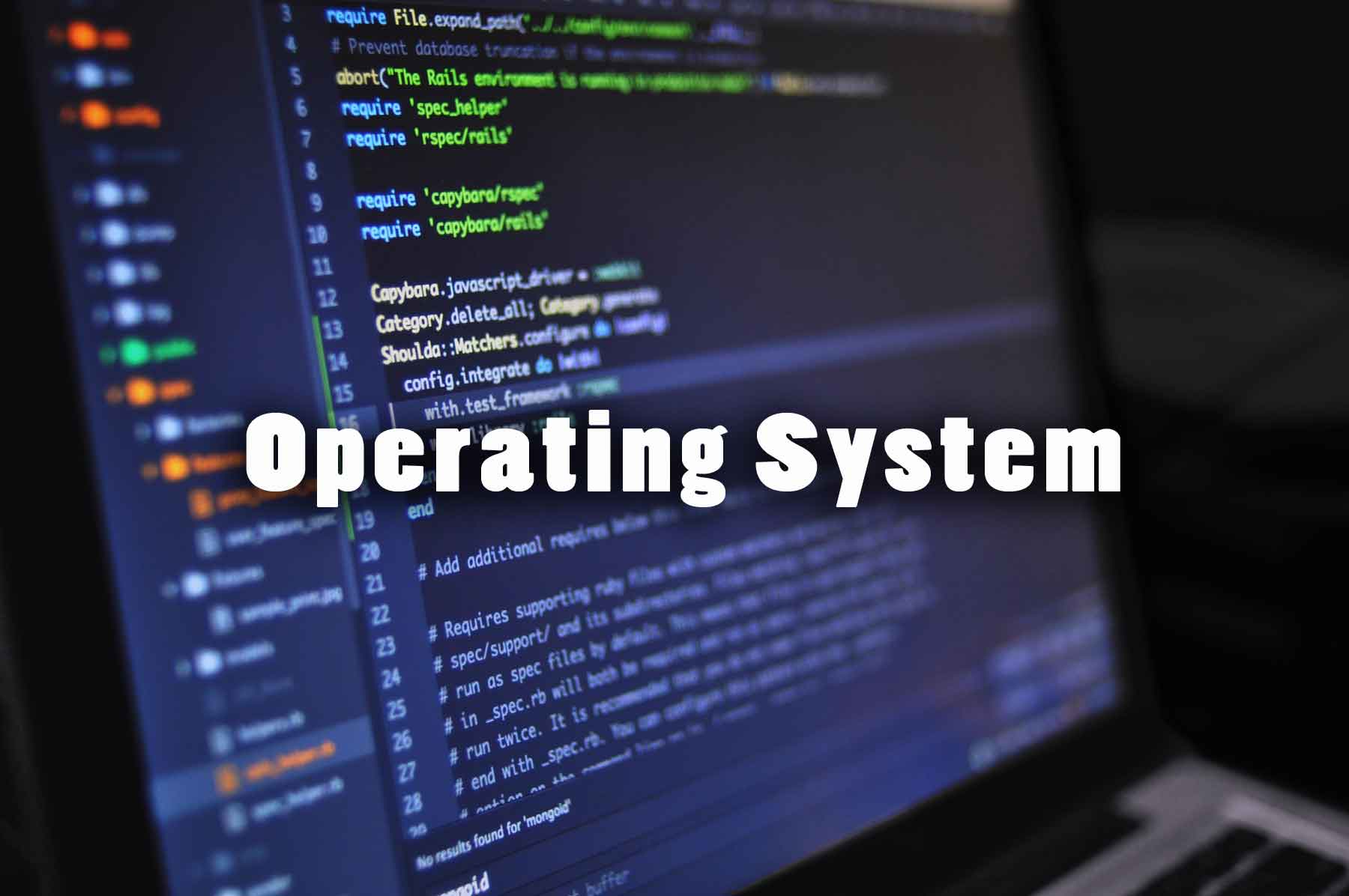Operating System Typical Questions and Answers
The Free download links of Operating System Typical Questions and Answers Papers enclosed below. Candidates who are going to start their preparation for the Operating System Typical papers can use these links. Download the Operating System Typical Papers PDF along with the Answers. Operating System Typical Papers are updated here. A vast number of applicants are browsing on the Internet for the Operating System Typical Question Papers & Syllabus. For those candidates, here we are providing the links for Operating System Typical Papers. Improve your knowledge by referring the Operating System Typical Question papers.

Typical Questions and Answers on Computer Networking
1. Scheduling is
(a) allowing job to use the processor
(b) unrelated to performance considerations
(c) quite simple to implement, even on large main frames
(d) the same regardless of the purpose of the system
2. FIFO scheduling is
(a) preemptive scheduling
(b) deadline scheduling
(c) non-preemptive scheduling
(d) fair share scheduling
3. A semaphore count of negative n means (s = n) that the queue contains __________ waiting process
(a) n+ 1
(b) n-1
(c) n
(d) 0
4. A null processor has process identifier
(a) -1
(b) 1
(c) 0
(d) null
5. Race around condition occurs when
(a) two process wait for the same resource
(b) all resources are shared
(c) two processes unknowingly wait for resources that are held by each other
(d) two processes share the same shared resources
6. A process scheduler is the processor management unit, which
(a) co-ordinates the process synchronization
(b) gives all submitted jobs to the job scheduler
(c) selects a job to run
(d) selects a process to run
7. Round Robin is a
(a) kind of magnetic drum
(b) process synchronization policy
(c) process scheduling policy
(d) memory allocation policy
8. The most complex dispatcher is
(a) should always be used
(b) is never used on large computers
(c) should never be used
(d) should be used only on large computers
9. Round-robin scheduling
(a) is quite complex to implement
(b) allows interactive task quicker access to the processor
(c) allows processor bound tasks more time in the processor
(d) gives each task the same chance at the processor
10. Feed back queue
(a) are very simple to implement
(b) dispatch task according to execution characters
(c) are used to favour real time tasks
(d) require manual intervention to implement properly
11. I/O intensive jobs
(a) use less processor time than most jobs
(b) you are constrained by their IVO requirements
(c) Run more quickly than processor intensive jobs
(d) should all be executed at the same time
12. The SJF algorithm
(a) executes first the job that last entered the queue
(b) executes first the job that first entered the queue
(c) executes first the job with the least processor needs
(d) executes first the job that has been in the queue the longest.
13. Check pointing the jobs
(a) allows it to be completed successfully
(b) allows it to continue executing later
(c) prepares it for finishing
(d) occurs only when there is an error in it
14. At a single terminal CPU, 40 % of ail users have no wait to use the terminal and coverage wait tine for all users in 50 minutes, what is the average wait time for those who wait ?
(a) 60
(b) 80
(c) 70
(d) 100
15. A task is
(a) the smallest discrete step in a job
(b) part of I/O
(c) a piece of work
(d) a collection of jobs
16. A process is another name for
(a) a job
(b) paging
(c) a task
(d) the operating system dispatcher
17. A task is
(a) the creation of a new job
(b) increasing the priority of task
(c) the dispatching of a task
(d) the creation of new process
18. A task in a blocked state
(a) is executable
(b) must still be placed in the run queue
(c) is running
(d) is waiting for some temporarily unavailable resource
19. Resource locking
(a) allows multiple tasks to simultaneously used resources
(b) forces only one task to use any resource at any time
(c) can easily cause a deadlock condition
(d) is not used for disk drive
20. Inter process communication
(a) is never necessary
(b) is required for all processes
(c) allows processors to synchronize activity
(d) is usually done via disk drives
21. Spinning
(a) requires several processes
(b) uses very little processor time
(c) requires the processor to keep trying until successful
(d) should be used for all resources
| Practice Questions | Objective Papers |
| Quiz | Important Questions |
| Mock Test | Previous Papers |
| Typical Question | Sample Papers |
| MCQs | Model Papers |
22. Global locks
(a) are used to avoid local locks
(b) synchronize access to global resources
(c) synchronize access to local resources
(d) prevent access to global resources
23. The necessary conditions for deadlock, processes claim exclusive control of the resources require
(a) no preemption
(b) circular wait
(c) mutual exclusion
(d) hold and wait
24. The no preemption condition for deadlock exists when
(a) each resources is either currently assigned to exactly one process or is available
(b) process currently holding resources granted earlier can request new resources
(c) resources previously granted cannot be forcibly taken away from a process
(d) there must be circular chain of two or more processes each of which is waiting for a resource held by the next member of chain
25. The resources that can cause dead lock is
(a) read only files
(b) printers
(c) shared programs
(d) all of the above
26. Four necessary conditions for deadlock to exist are mutual exelusion, nopreemplion, circular wait and
(a) hold and wait
(b) race around condition
(c) multiprogramming
(d) buffer overflow
27. Round Robin scheduling is essentially the preemptive version of
(a) FIFO
(b) shortest remaining time
(c) shortest job first
(d) longest time first
28. Imposing a linear order on all resources types and letting processes request is an example of resources in increasing order of enumeration is
(a) Deadlock avoidance where the system will never enter an “unsafe” state
(b) Deadlock prevention where the maximum needs of each job must also be taken into account
(c) Deadlock avoidance where hold and wait conditions cannot occur
(d) Deadlock prevention where circular waits for resources can never take place
29. Queues serve a major role in
(a) simulation of recursion
(b) simulation of arbitrary linked list
(c) simulation of motion sub atomic particle
(d) simulation of limited resource allocation
30. The function of dispatcher is
(a) switching context
(b) switching to user mode
(c) jumping to the proper location in the user program to restart that program
(d) all of the above
31. A solution of critical section problem must satisfy
(a) mutual exclusion
(b) bounded waiting
(c) progress
(d) all of the above
32. The term P in Semaphore means
(a) Wait
(a) Signal
(b) none of these
(c) both (a) and (b) above
33. The term V in Semaphore means
(a) Wait
(b) Signal
(c) none of these
(d) both (a) and (b) above
34. Indefinite blocking is called
(a) Deadlock
(b) Starvation
(c) none of these
(d) both (a) and (b) above
35. A process utilizes a resource in the sequence
(a) Request, Use, Release
(b) Use, Release, Request
(c) Use, Request, Release
(d) Request, Release, Use
36. If process values have 12, then 6 V and 4 P operation the resultant value is
(a) 12
(b) 14
(c) 10
(d) 8
37. A set of resources allocations such that the system can allocate resources to each process is some order, and still avoids a dead lock is called
(a) unsafe state
(b) starvation
(c) safe state
(d) greedy allocation
38. A dusk scheduling algorithm in an 0.S. causes the disk arm to seek back and forth access the dise surface servicing all request in its path, this is a
(a) first come first served
(b) scan
(c) shortest seek time first
(d) E & chenbach scheme
39. An attached processor
(a) is used one only a few computers
(b) causes all processor to function equally
(c) is used only for limited, specific functions
(d) is more difficult to implement than a co-processor
40. A co-processor
(a) is relatively easy to support in software
(b) causes all processes to function equally
(c) works with any application
(d) is quite common in modern computers
41. Process is
(a) contents of main memory
(b) a program in execution
(c) a program in high level language kept on disk
(d) a job in secondary memory
42. Situations where two Or more processes are reading or writing some shared data and the final result depends on who runs precisely which are called
(a) race condition
(b) mutual exclusions
(c) critical sections
(d) message passing
43. What is the initial value of the semaphore to allow only one of the many processes to enter their section ?
(a) 0
(b) 1
(c) 2
(d) 3
44. To avoid race condition the number of processes that may be simultaneously inside their critical section is
(a) 0
(b) 2
(c) 1
(d) 4
45. Producer consumer problem can be solved using
(a) Semaphores
(b) Monitors
(c) event counters
(d) all of the above
46. In order to allow only one process to enter its critical section, binary semaphore are initialized to
(a) 0
(b) 1
(c) 2
(d) 3
47. The strategy of allowing process that are logically runnable suspended is called
(a) preemptive scheduling
(b) shortest job first
(c) non preemptive scheduling
(d) first come first served
48. Moving process from main memory to disk is called
(a) Scheduling
(b) Swapping
(c) Caching
(d) spooling
49. What problem solved by Dijkstra banker’s algorithm ?
(a) mutual exclusion
(b) deadlock avoidance
(c) cache coherence
(d) dead lock recovery
50. Banker’s algorithm for resource allocation deals with be temporarily
(a) dead lock prevention
(b) deadlock recovery
(c) dead lock avoidance
(d) mutual exclusion



